In late 2016, my husband and I decided to adopt a predominantly whole food plant based diet based on strong evidence of its beneficial effect on our health. The great challenge proved to be learning how to prepare satisfying meals using fresh fruits and vegetables, whole grains, legumes, nuts, seeds, and healthy oils. We taught ourselves by working our way through popular cookbooks.
Five years later, we’d managed to sample ~1,500 new recipes from 10+ cookbooks, a handful of magazines and websites, and recommendations from friends. I’ve learned that there’s no end-all-be-all cookbook; each has its relative strengths and weakness. I’ve generally found no more than 25-35% of the recipes in a given cookbook worth repeating. The others weren’t bad. Rather, we opted to set the bar high with respect to taste and level of effort in preparation. Nonetheless, I remain a proponent of cover-to-cover cookbook exploration. That commitment creates an opportunity to explore a lot of ingredients and recipes that you otherwise might bypass. It makes dining more interesting and improves skills and confidence in the kitchen.
Should you wish to undertake a similar journey, here are the cookbooks we explored along with links to photo journals that showcase the recipes.
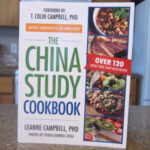 The China Study Cookbook by Leanne Campbell complements groundbreaking research by Dr. T. Colin Campbell (the author’s father) that show how plant-based diets reduce the incidents of heart disease, cancer, type 2 diabetes, and other chronic (and deadly) diseases. The cookbook provides 126 tasty recipes (and we tried them all) as well as a gaggle of good advice for those making the shift to a whole food plant based diet.
The China Study Cookbook by Leanne Campbell complements groundbreaking research by Dr. T. Colin Campbell (the author’s father) that show how plant-based diets reduce the incidents of heart disease, cancer, type 2 diabetes, and other chronic (and deadly) diseases. The cookbook provides 126 tasty recipes (and we tried them all) as well as a gaggle of good advice for those making the shift to a whole food plant based diet.
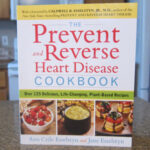 The Prevent and Reverse Heart Disease Cookbook by Ann Crile Esselstyn and Jane Esselstyn serves as the companion to the New York Times best-selling book, Prevent and Reverse Heart Disease by Dr. Caldwell Esselstyn. Given that patient compliance with Dr. Esselstyn’s dietary protocols proved crucial for success, the authors took to the kitchen to create a series of recipes that would delight the taste buds along with the blood vessels that sustain heart function. We sampled them all 160 of them.
The Prevent and Reverse Heart Disease Cookbook by Ann Crile Esselstyn and Jane Esselstyn serves as the companion to the New York Times best-selling book, Prevent and Reverse Heart Disease by Dr. Caldwell Esselstyn. Given that patient compliance with Dr. Esselstyn’s dietary protocols proved crucial for success, the authors took to the kitchen to create a series of recipes that would delight the taste buds along with the blood vessels that sustain heart function. We sampled them all 160 of them.
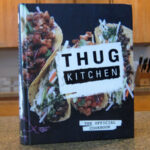 Thug Kitchen by Michelle Davis and Matt Holloway encourages readers to eat more fresh fruits, vegetables, and whole grains, prepare our own food, and have a bit of fun while we’re at it. And, just in case you think that only high-brow, elitist snobs or hopelessly earthy granola types eat this stuff, the authors have the tattoos and potty mouths to change your mind. We made a little over half of the recipes and found them to rate among the best we’d tasted on our cooking adventure.
Thug Kitchen by Michelle Davis and Matt Holloway encourages readers to eat more fresh fruits, vegetables, and whole grains, prepare our own food, and have a bit of fun while we’re at it. And, just in case you think that only high-brow, elitist snobs or hopelessly earthy granola types eat this stuff, the authors have the tattoos and potty mouths to change your mind. We made a little over half of the recipes and found them to rate among the best we’d tasted on our cooking adventure.
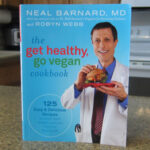 The Get Healthy, Go Vegan Cookbook by Dr. Neal Barnard and Robyn Webb took inspiration from Dr. Barnard’s clinical practice in preventative medicine with a particular focus on diabetes. We prepared 94 of the 125 low-fact, low glycemic, high nutrient recipes that promised to ”lure with their aromas and flavors” while paving the way to a heathier lifestyle. They were satisfying and easy to make and provided a good deal of variety in daily, weekly, and monthly meal planning.
The Get Healthy, Go Vegan Cookbook by Dr. Neal Barnard and Robyn Webb took inspiration from Dr. Barnard’s clinical practice in preventative medicine with a particular focus on diabetes. We prepared 94 of the 125 low-fact, low glycemic, high nutrient recipes that promised to ”lure with their aromas and flavors” while paving the way to a heathier lifestyle. They were satisfying and easy to make and provided a good deal of variety in daily, weekly, and monthly meal planning.
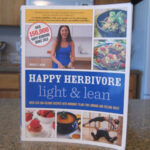 Happy Herbivore Light & Lean by Lindsay Nixon shows “how easy, affordable, approachable, realistic, and, most importantly, delicious, eating healthy can be.” The recipes use common ingredients and can be assembled with relatively little effort. Portion sizes varied from 1 to 4 servings – perfect for our two-person household. This cookbook is a great resource for everyday cooking. It also provides a number of options that work well for casual dining with friends.
Happy Herbivore Light & Lean by Lindsay Nixon shows “how easy, affordable, approachable, realistic, and, most importantly, delicious, eating healthy can be.” The recipes use common ingredients and can be assembled with relatively little effort. Portion sizes varied from 1 to 4 servings – perfect for our two-person household. This cookbook is a great resource for everyday cooking. It also provides a number of options that work well for casual dining with friends.
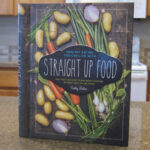 Straight Up Food by Cathy Fisher joins the cadre of chefs who meet the demand for whole food plant based recipes without added salt, oil, or sugar. Instead of salt, she lets the natural flavors of the food and spices shine. Instead of oil, she uses broth (or water) for stir-frying and tree nuts (typically raw cashews) for dressings and desserts. Instead of sugar, she uses applesauce, bananas, dates, raisins, and other fruits to satisfy the sweet tooth. We made all of her recipes.
Straight Up Food by Cathy Fisher joins the cadre of chefs who meet the demand for whole food plant based recipes without added salt, oil, or sugar. Instead of salt, she lets the natural flavors of the food and spices shine. Instead of oil, she uses broth (or water) for stir-frying and tree nuts (typically raw cashews) for dressings and desserts. Instead of sugar, she uses applesauce, bananas, dates, raisins, and other fruits to satisfy the sweet tooth. We made all of her recipes.
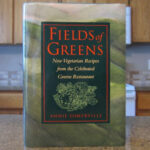 Fields of Greens by Annie Somerville features gourmet vegetarian cuisine from the celebrated San Francisco eatery Greens Restaurant. While clearly high-end (and somewhat high calorie), you don’t need years of training, fancy gadgets, or access to exotic food suppliers to make every recipe in the book. Moreover, Chef Somerville’s expert instructions provide just the right amount of guidance. We prepared all 284 recipes… and gained a bit of weight in the process.
Fields of Greens by Annie Somerville features gourmet vegetarian cuisine from the celebrated San Francisco eatery Greens Restaurant. While clearly high-end (and somewhat high calorie), you don’t need years of training, fancy gadgets, or access to exotic food suppliers to make every recipe in the book. Moreover, Chef Somerville’s expert instructions provide just the right amount of guidance. We prepared all 284 recipes… and gained a bit of weight in the process.
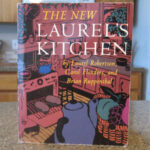 Laurel’s Kitchen by Laurel Robertson, Carol Flinders, and Brian Ruppenthal shares the combined wisdom of a community of folks who are as concerned about the health of their patrons as they are about the health of the planet. Focused on vegetarian cuisine, the culinary instruction set cultivates a mastery of whole food plant based cooking without making the budding cook dependent on a collection of recipes. We read the book and prepared roughly one-quarter of the recipes.
Laurel’s Kitchen by Laurel Robertson, Carol Flinders, and Brian Ruppenthal shares the combined wisdom of a community of folks who are as concerned about the health of their patrons as they are about the health of the planet. Focused on vegetarian cuisine, the culinary instruction set cultivates a mastery of whole food plant based cooking without making the budding cook dependent on a collection of recipes. We read the book and prepared roughly one-quarter of the recipes.
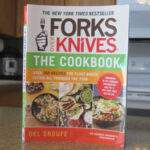 Forks Over Knives by Del Sroufe traces its origins to a documentary by the same name that makes a clear and compelling case for a whole food plant based diet. The first 20ish pages of the book reinforce key messages from the documentary while providing useful tips for outfitting the kitchen. The book offers 321 recipes of which we sampled 241. It turned out to be our least favorite cookbook, although the dessert recipes proved stellar.
Forks Over Knives by Del Sroufe traces its origins to a documentary by the same name that makes a clear and compelling case for a whole food plant based diet. The first 20ish pages of the book reinforce key messages from the documentary while providing useful tips for outfitting the kitchen. The book offers 321 recipes of which we sampled 241. It turned out to be our least favorite cookbook, although the dessert recipes proved stellar.
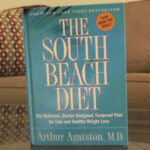 The South Beach Diet by Dr. Arthur Agatson was the lone cookbook our culinary journey based on the Standard American Diet. Its exploration pre-dated our conversion to a predominantly whole food plant based diet. It boasts a “delicious, doctor-designed, foolproof plan for fast and healthy weight loss” and made good on its claim when our household needed to lose a few. We sampled 80% of its recipes and found the meal plan quite livable during all three of its phases.
The South Beach Diet by Dr. Arthur Agatson was the lone cookbook our culinary journey based on the Standard American Diet. Its exploration pre-dated our conversion to a predominantly whole food plant based diet. It boasts a “delicious, doctor-designed, foolproof plan for fast and healthy weight loss” and made good on its claim when our household needed to lose a few. We sampled 80% of its recipes and found the meal plan quite livable during all three of its phases.
If you’d like to read about our cooking adventure, check out early posts in the cooking section of the blog.